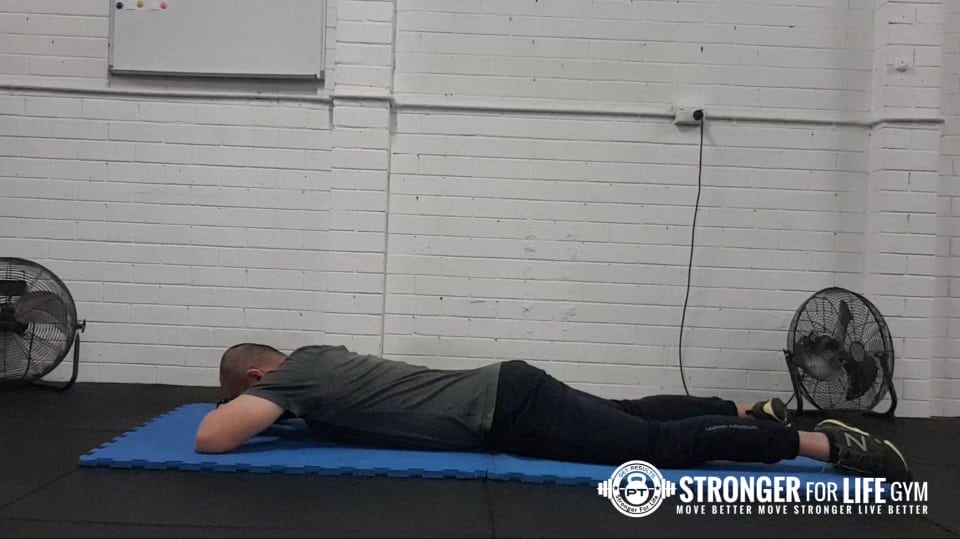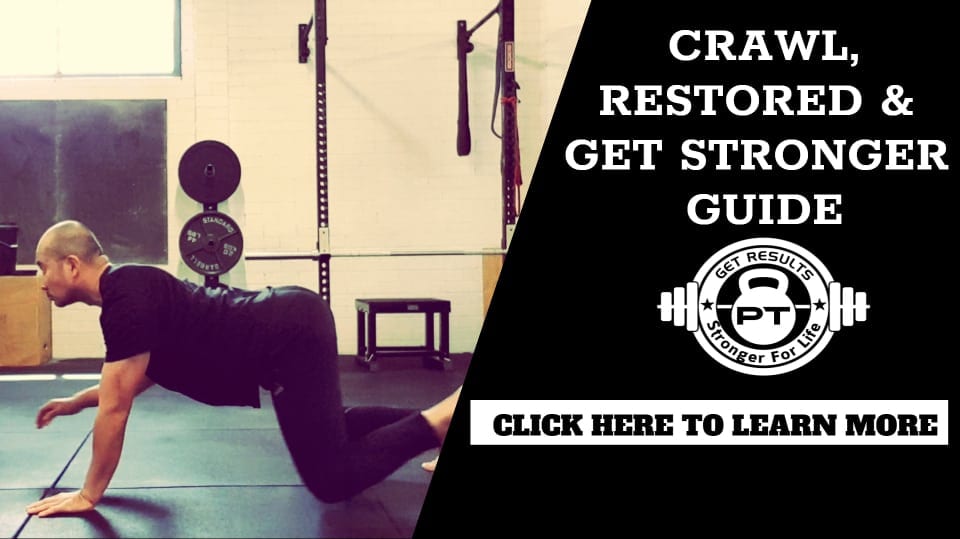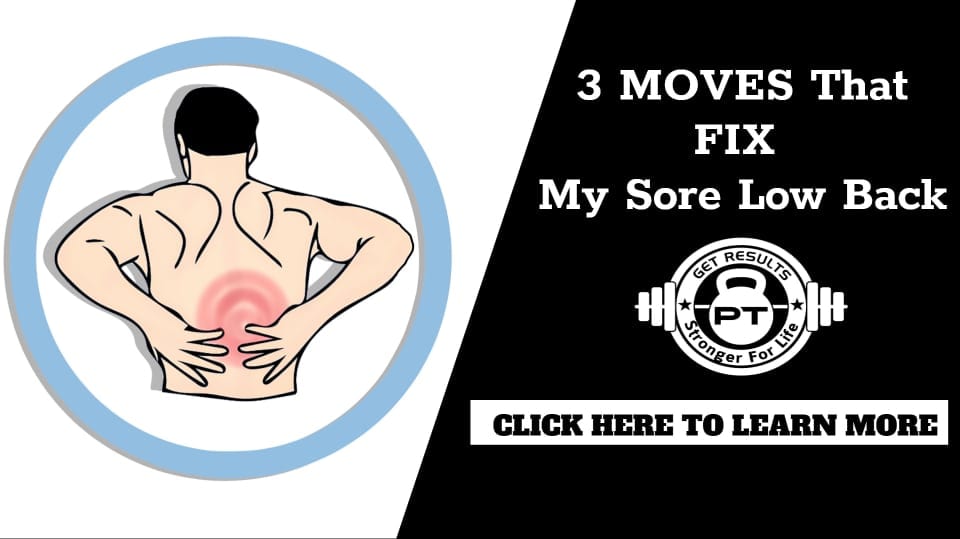 Do you have low back pain or a sore low back? If you have one, you should first seek the appropriate medical attention and get it properly diagnosed. This is not a post for curing low back pain but more about sharing my experience of what has worked for me to fix my sore low back. I injured my low back from doing a set of deadlift in 2015 which I should not have attempted. I was off a 24-hour plane ride from a Strong First Plan Strong seminar I attended in Portland and my back feels a little funny but there was no pain. I went ahead and did the deadlifts anyway and there went my back. Although my low back felt a load of relief after I was treated by a trusted osteopath, I was never 100% for almost a year. My low back was still sore in varying degrees and was very stiff when I woke up in the morning. Having heard from a few friends in Facebook land that Original Strength (OS) is great restorative movement system that can help restore the body, I bought the book called Pressing RESET – Original Strength Reloaded. I randomly performed the OS RESETs in the book with not much expectation. In about 10 to 12 weeks, I woke up completely ache-free in my low back and I feel like I got a new body. Up til today my low back feels as normal as it ever being. Because it works and I feel more people should know more about OS movement system, it led me to hosting 3 Original Strength Workshops in Perth.
Do you have low back pain or a sore low back? If you have one, you should first seek the appropriate medical attention and get it properly diagnosed. This is not a post for curing low back pain but more about sharing my experience of what has worked for me to fix my sore low back. I injured my low back from doing a set of deadlift in 2015 which I should not have attempted. I was off a 24-hour plane ride from a Strong First Plan Strong seminar I attended in Portland and my back feels a little funny but there was no pain. I went ahead and did the deadlifts anyway and there went my back. Although my low back felt a load of relief after I was treated by a trusted osteopath, I was never 100% for almost a year. My low back was still sore in varying degrees and was very stiff when I woke up in the morning. Having heard from a few friends in Facebook land that Original Strength (OS) is great restorative movement system that can help restore the body, I bought the book called Pressing RESET – Original Strength Reloaded. I randomly performed the OS RESETs in the book with not much expectation. In about 10 to 12 weeks, I woke up completely ache-free in my low back and I feel like I got a new body. Up til today my low back feels as normal as it ever being. Because it works and I feel more people should know more about OS movement system, it led me to hosting 3 Original Strength Workshops in Perth.
Here are the OS Moves /RESETs that help my low back that I want to share with you.
1. Diaphragmatic Breathing
When it comes to breathing, most people do not pay enough attention to their breathing and do not realise the huge importance of proper breathing for good health and function. And being able to engage the diaphragm, a dome-shaped muscle underneath the lungs, during breathing helps the inner core (which is made up of diaphragm, transversus abdominis and pelvic floor) to properly stabilise the spine by “softening” the forces your body encounter and generate. I kind of think of the inner core like a “car suspension”. Now imagine your car with faulty suspension. I believe it is going to cause a lot of damage to the car and the ride is going to be bumpy. The diaphragm is like any muscle it needs strength training (even though you cannot see it) and be patterned to work properly to engage in the inner core through proper breathing practice.
So how do you perform your diaphragmatic breathing? Find a clear floor space with minimal distraction in the mind for at least 10 min and lie down either on your back or front in the most comfortable or strain-free position. It should be a position you can relax and focus on your breathing with no interruption from anyone. During the diaphragmatic breathing practice, have the tongue rest on the roof of the mouth behind the front teeth and breathe in and out with your nose only and not mouth and pay attention to how you actually breathe. Did you hold tension in your shoulders and neck? Drop the tension off if you did. And learn to breathe deep as that develops strength in your diaphragm. Over time, learn to take in longer breaths. And it is hugely important to find a pose that it is 100% pain-free because it is extremely hard to breathe with the diaphragm when in pain. When you are in pain you are in shock and that set the body off in panic mode. You will breathe with your chest and shoulders. I recommend trying out the following 3 poses which I find most people are comfortable with. And see what works best for you.
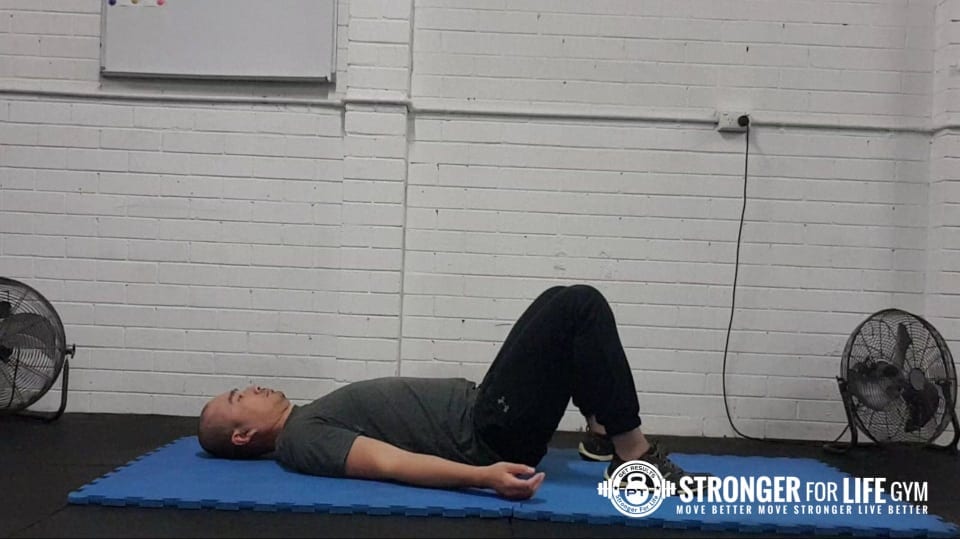
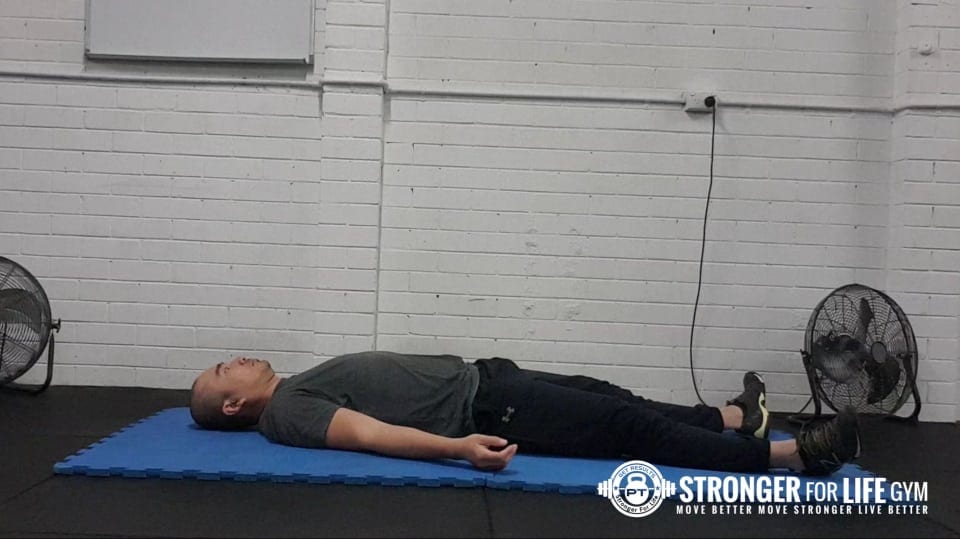
2. Quadruped Rocking
For some strange reasons when I was having the sore low back, I was gravitated towards rocking a lot. I enjoy the “soothing” feeling of rocking combined with slow breathing. I will rock back and forth within a very comfortable range and minimal muscular exertion. Before I know, I was comfortably rocking over a much broader range with minimal restriction. Why do the rocking? It helps teach the body to operate as a whole unit as it should and get the shoulders and hips to connect and work together.
How do you do the rocking? Get down on the floor on your fours and have the shoulders stacked on top of your wrist and hips joints stacked on top of your knees. (1) Maintain a chest up position, (2) have either feet dorsiflex or plantarflex, (3) and keep your head up. Then push your butt towards your feet and rock back and forth slowly to start as you maintained your diaphragmatic breathing. Be sure to do your rocking in both dorsiflex and plantarflex feet position with different knees width and speed. Watch video below for how rocking is done.
3. Crawling
As ridiculous as it is to crawl when you can already walk, getting on the floor and crawling like a baby seems to not only made my low back niggles go away after prolonged sitting it seems to help me developed more reflexive strength and agility. Why crawling? Crawling is both restorative and performance-enhancing. It can help you re-gain lost core strength possibly due to injuries and prolonged sitting. What is reflexive strength? It is the body’s ability to anticipate, prepare and response to movement before and when it happens. And that ability is injury preventing and also performance-enhancing.
How can you start crawling? The best place to start is crawl like a baby just you see in the video shown below and slowly works towards crawling off your knees.
For more detailed instructions on crawling, click Crawl, Restored and Get Stronger Guide. The way you crawl does matter. Make sure you do it right!
If you are going to give the 3 moves a try, let me know if they help you in the comment section below.
BONUS MOVE: Do not do any of the above 3 moves in pain or perform any moves that trigger pain.
